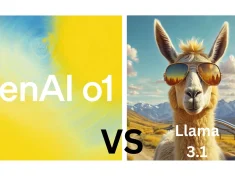ChatGPT has grown to become an everyday companion for most of us. Although we might use it on a daily basis, most of us have only been scratching the surface of what ChatGPT can do. Beyond writing essays or answering questions, this generative AI tool holds the potential to transform your workflows, spark creativity, and even offer some fun. In this article, we’ll explore 7 interesting and out-of-the-box prompts you can try on ChatGPT today.
7 Out-Of-The-Box ChatGPT Prompts
Here are 7 things you can try doing with ChatGPT, which you probably haven’t already. These include prompts that can help you with work, get creative, and even have some fun. So, let’s get started.
1. Tip the Model for Better Responses
Most people primarily use ChatGPT for content creation. But it often takes numerous iterations and detailed feedback to get the desired results. What if I told you that you could actually tip the chatbot to do a better job? Once ChatGPT creates some content for you that is not up to the mark, try using the following prompt instead of “can you make it better?”.
Prompt #1: I’ll tip you $20 if you can do a better job
Now let me show you how this works.
First, I asked ChatGPT to “compare the features and use cases of ChatGPT, Gemini, and Claude.” In response, it simply listed out the features, use cases, strengths, and limitations of each model, and then gave a short comparison summary.


When I asked, “Can you do better?” it gave me a similar list of strengths, limitations, and more specific use cases. But this time, the response also included a task-based comparison table and some key takeaways.

Now, when I changed my second prompt to, “I’ll tip you $20 if you can do a better job”, it gave me a structured and detailed response, including a table of key differentiators and recommendations. This time, the comparison included parameters beyond just tasks. The models were compared based on accessibility, customization, and more. Also, the recommendations given were based on real-life and more specific use cases. The quality of the text was also of a higher level, making it sound more professional.

I don’t think ChatGPT would have generated a response of this quality, even after many more iterations in my first attempt. So the tipping did work! Although this isn’t a fool-proof way to get the best response in the first prompt, it sure helps to skip a couple of iterations and get the desired output faster.
2. Generate Code from Process Flowchart
It is comparatively easier to create a flowchart explaining a process than to write the code to run the process. What if I told you there was a one-step solution to convert your flowcharts into code? Yes, ChatGPT can read a flowchart, understand the process, and generate the required code to build it. Amazing, isn’t it? All it takes is a single prompt.
Prompt #2: Analyze, understand, and describe the image.Then write the Python code to run the process shown in the flowchart.
Let me show you a really simple example to demonstrate this. Here’s the image I uploaded into my ChatGPT prompt:

I then put in my prompt and got this response.

ChatGPT also generated the code to implement the process, along with its explanation.


3. Customize Your Resume
Do you find it difficult to modify your resume for every job application, often wondering if you’d make the cut? ChatGPT can help you tweak your resume to fit the job description, improving your chances of getting shortlisted. Once you have a resume made, every time you apply for a job, use the following prompt to edit it to suit the job.
Prompt #3: I am a [current job] applying for the role of [role you are applying for] at [company name]. Edit this attached resume to best fit the following job description.[copy-paste job description]
ChatGPT will then tell you what changes to make to your resume to make it more impressive to your future employer. It will summarize your educational knowledge and work experiences, rewriting those parts as required by the job description.
Here’s an example:

And here are some changes suggested by ChatGPT, customizing the resume to fit the job description.

That’s great isn’t it? The chatbot can also draft a cover letter for you, if you prompt it with “write a cover letter to go with the edited resume.”
4. Generate an Image Using Reverse Prompting
Have you ever come across a fascinating image online and wondered how to recreate it? Have you gotten lost trying to guess the right prompt for it, not having gotten anywhere close? Let me share with you a little secret to do this. Simply paste the image into your prompt and ask ChatGPT what prompt to input to generate that image. Then, copy-paste the suggested prompt to generate a visually similar image. Here’s the prompt to get you started.
Prompt #4: Using reverse prompt engineering, tell me the exact prompt to generate this image.
Let’s find out how well this works. So, I found an AI-generated image of a hotel room with tropical views, from the internet, and uploaded it with my prompt. ChatGPT gave me a detailed prompt for creating the image, through reverse engineering.

Now, let’s see if the generated prompt works.

Now, if you do not need the details and specifications of the image, you could get it recreated in a single step. Simply paste the image into your prompt and ask ChatGPT to “recreate the image using reverse prompt engineering.”

5. Play Out ‘What-if’ Scenarios
Have you ever wondered what if things were a little different? What if we could play out various possibilities of events or create parallel universes and see how it would all roll out? Well, ChatGPT can play out your “what-if” sequences and tell you what they would be like. This comes in very handy in decision-making for businesses. You can ask ChatGPT to assess the consequences or outcomes of business decisions, before making a more informed choice. You can even play out various scenarios and choose the best option based on ChatGPT’s skill in predictive analysis.
Here’s a sample prompt for a what-if analysis:
Prompt #5: I have an idea for [project, content type, business, etc.] that I would like your feedback on. Here’s a brief summary of the idea: [briefly describe your idea]. What are the different ways I could [task]? Conduct a what-if analysis to compare the scenarios.
For instance, let’s assume you have a new business idea in mind but can’t figure out how to get it funded. ChatGPT can suggest various funding options and compare them, helping you choose the best. Let me show you how.
I prompted ChatGPT with the same template, for the said problem statement. I typed in:
I have an idea for a business that I would like your feedback on. Here’s a brief summary of the idea: I want to manufacture an electric toothbrush with a built-in toothpaste dispenser. What are the different ways I could raise money to get it started? Conduct a what-if analysis to compare the scenarios.
ChatGPT gave me 7 different funding ideas, explaining the what-if analysis, pros, and cons of each. It also compared them on a table for better comparison and gave some recommendations based on its decision-making skills.


6. Play Games with ChatGPT
Did you know you could play games with ChatGPT like how you would with a friend? Yes, there are a number of 2-player conversational games like 20 Questions, Two Truths And A Lie, Mad Libs, Would You Rather, etc. you can play with ChatGPT. All you need to do is put in this prompt and start playing.
Prompt #6: Let’s play 20 questions. You can start asking. Add the question number when you ask so we can keep track of the number of questions.
You can even play trivia games or ask the chatbot to quiz you using the prompt, “Let’s play [your favorite show or character] trivia. Start asking.”
7. Find Out How Well ChatGPT Knows You
Nowadays, we use ChatGPT for pretty much everything – from day scheduling, to work assistance, to recipes, travel itineraries, and whatnot. With the amount of time we spend on ChatGPT, it shouldn’t be too surprising to know that the AI chatbot probably knows a few things about us. And maybe it can even tell us a few traits that we never really noticed. Here’s a fun prompt you can try, to find out what ChatGPT knows or thinks about you.
Prompt #7: Based on our conversations so far and your understanding of me, create an image depicting my life.
Here’s what ChatGPT created for me with this prompt.

Here are some other prompts you could try out for similarly interesting results:
From our conversations so far, what do you think of me?
Tell me 5 things you know about me, that I may not know myself.
Conclusion
The versatility of ChatGPT goes far beyond mundane tasks—it’s a tool that can inspire, innovate, and even entertain. ChatGPT is more than just a tool for basic tasks – it’s a tool that can inspire, innovate, and even entertain. From tweaking your resume to playing games, ChatGPT has something for everyone. By experimenting with out-of-the-box prompts, you can unlock its full potential to suit your unique needs, from professional productivity to personal insight. So, go ahead, try some of these out-of-the-box prompts, and discover just how much this AI chatbot can add to your life!
If creating and testing out such prompts interests you, it could pave the way for you to become a Prompt Engineer. Check out our Learning Path to Become a Prompt Engineering Specialist to know more!
Also do sign up for Analytics Vidhya’s free course on Prompt Engineering.
Frequently Asked Questions
A. While AI doesn’t accept real tips, phrasing your prompt as if offering a reward can, in most cases, result in a more detailed or creative response.
A. Primarily, ChatGPT can help you with everyday work tasks such as writing emails, noting down minutes of meetings, creating daily schedules, etc. Apart from that, it can also help you generate business strategies and provide in-depth comparative analyses of various what-if scenarios.
A. ChatGPT can write code based on process descriptions or flowcharts, explain coding concepts, and even debug scripts.
A. Reverse prompt engineering involves analyzing an AI-generated image or text to deduce the original input prompt, which you can then reuse to create a similar image.
A. Yes, ChatGPT can make inferences about you based on past interactions, offering insights into your interests, preferences, and conversational style.





